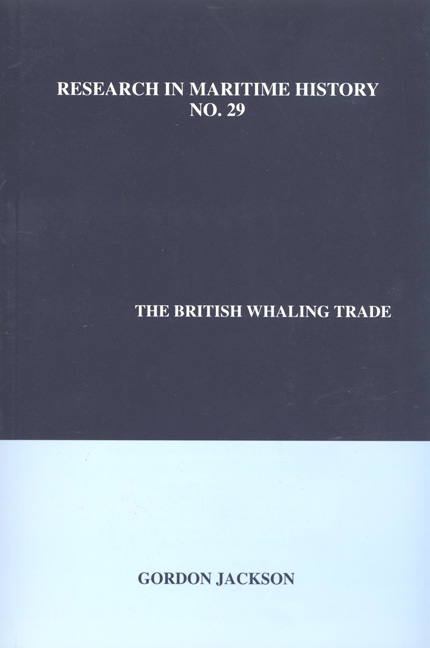Book contents
- Frontmatter
- Dedication
- Contents
- List of Tables in the Text
- List of Appendices
- New Introduction
- Preface
- Part One The Traditional Whaling Trades, 1604-1914
- Part Two The Modern Whaling Trade, 1904-1963
- Chapter 9 New Whaling Techniques
- Chapter 10 New Whaling Areas
- Chapter 11 Advances in Oil Technology
- Chapter 12 Expanding Fleets and the New Fishing Grounds, 1919-1920
- Chapter 13 Crisis and Contraction, 1929-1932
- Chapter 14 Regulated Recklessness, 1932-1939
- Chapter 15 The Final Fling, 1945-1963
- Conclusion
- Appendices
- Select Bibliography
- Additional Bibliography
- Index
Chapter 13 - Crisis and Contraction, 1929-1932
from Part Two - The Modern Whaling Trade, 1904-1963
- Frontmatter
- Dedication
- Contents
- List of Tables in the Text
- List of Appendices
- New Introduction
- Preface
- Part One The Traditional Whaling Trades, 1604-1914
- Part Two The Modern Whaling Trade, 1904-1963
- Chapter 9 New Whaling Techniques
- Chapter 10 New Whaling Areas
- Chapter 11 Advances in Oil Technology
- Chapter 12 Expanding Fleets and the New Fishing Grounds, 1919-1920
- Chapter 13 Crisis and Contraction, 1929-1932
- Chapter 14 Regulated Recklessness, 1932-1939
- Chapter 15 The Final Fling, 1945-1963
- Conclusion
- Appendices
- Select Bibliography
- Additional Bibliography
- Index
Summary
“We should get as large a share as possible for ourselves and this country by greatly extending our operations now without licences,” Harold Salvesen wrote in his report on the viability of pelagic fishing in 1928, and so the firm rebuilt their fleet. The immediate result - an increase in their Antarctic oil production of seventy-four percent between 1928/1929 and 1929/1930 - certainly appeared to justify investment, and Southern Whaling and Hector Whaling were no less pleased with the performance of their new expeditions (appendix 13). Nevertheless, though total British Antarctic catches of oil rose from 44,879 tons in 1927/1928 to 61,781 in 1929/1930 and 120,533 in 1930/1931, her share of the world trade in oil actually declined slightly in these years of maximum effort on the part of the Norwegians. Total catches from the Antarctic rocketed from 145,394 tons in 1926/1927 to 601,391 in 1930/1931 as the number of factories operating there grew from seventeen to forty-one and the number of catchers, perhaps a more meaningful figure, from eighty to 232 (including those attached to land bases; see appendix 15).
Expansion could hardly have come at a worse time. After a generation of uncontrolled investment in raw materials of every kind the world had more than it needed - or more than it could afford - of most things; and as the boom of the late 1920s gave way to the greatest slump in history the whaling trade suffered with the rest. It was the Norwegians - according to the British - who caused the trouble by over-expansion in the late 1920s. Despite an easing of prices, profits remained high, and with their three leading companies paying out forty-five percent, 23 ¢ percent and 571/2 percent in dividends in the four years prior to 1928, and with most shared highly valued, it was easy enough to raise money to go after the £12.5 million which the 1929/30 catch was worth. Over £2.5 million was poured into 140,000 tons of new construction, and companies also took advantage of the general run-down of international trade by buying up 250,000 tons of laid-up British steamers for conversion into factories and transports.
- Type
- Chapter
- Information
- The British Whaling Trade , pp. 185 - 192Publisher: Liverpool University PressPrint publication year: 2004



